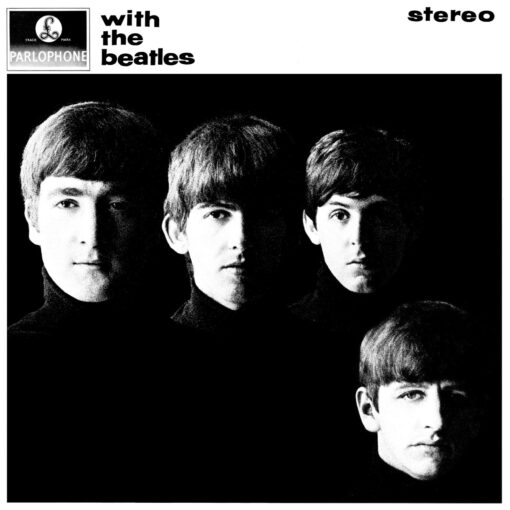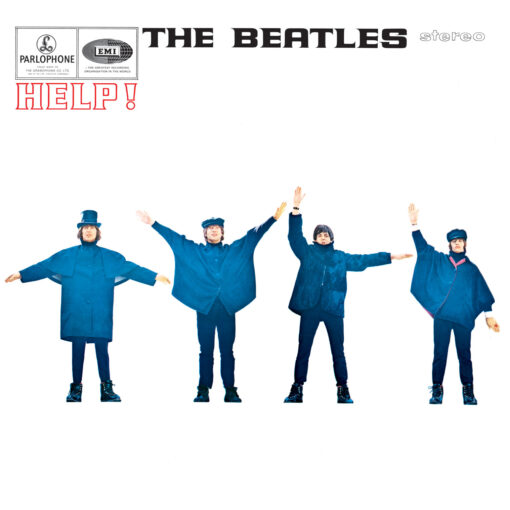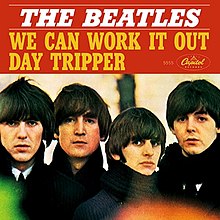- Published on 1969
- Author: Lennon/McCartney
- Track 4 on “Yellow Submarine“
JOHN 1980: “It’s a good sounding record that means nothing.”
PAUL circa-1994: “I remember ‘Hey Bulldog’ as being one of John’s songs and I helped him finish it off in the studio, but it’s mainly his vibe. There’s a little rap at the end between John and I, we went into a crazy little thing at the end. We always tried to make every song different because we figured, ‘Why write something like the last one? We’ve done that.’ We were on a ladder so there was never any sense of stepping down a rung, or even staying on the same rung, it was better to move one rung ahead.”
GEORGE 1999: “We now have an unreleased video of ‘Hey Bulldog,’ as you know. When we were in the studio recording ‘Bulldog,’ apparently it was at a time when they needed some footage for something else, some other record (Lady Madonna), and a film crew came along and filmed us. Then they cut up the footage and used some of the shots for something else. But it was Neil Aspinall who found out that when you watched and listened to what the original thing was, we were recording ‘Bulldog.’ This was apparently the only time we were actually filmed recording something, so what Neil did was, he put (the unused footage) all back together again and put the ‘Bulldog’ soundtrack onto it, and there it was!”
About “Hey Bulldog”
Hey Bulldog” is a vibrant and energetic song featured on 1969 album “Yellow Submarine.” Composed primarily by John Lennon, with contributions from Paul McCartney, the track exhibits a distinctive bluesy rock style.
Recorded during a session at Abbey Road Studios on February 11, 1968, the song’s lyrics are often considered whimsical and nonsensical, featuring phrases like “Sheepdog, standing in the rain.” Rather than conveying a specific meaning, these lyrics appear to aim for a playful and abstract tone.
Musically, “Hey Bulldog” is characterized by its dynamic interplay of instruments. It showcases a prominent bassline, sharp guitar riffs, and a propulsive drumbeat. A standout feature is the lively piano solo performed by John Lennon, adding a distinctive flair to the track.
Released on January 17, 1969, in the UK, and January 13, 1969, in the US as part of the “Yellow Submarine” album, the song has gained popularity over the years. It is particularly appreciated for its catchy melody and the memorable piano riff.
Despite its omission from the “Yellow Submarine” film, for which it was originally recorded, “Hey Bulldog” has become a standout track in The Beatles’ catalog. It has found a place in popular culture, being featured in various films, TV shows, and commercials. Additionally, the song has been covered by numerous artists.
It’s worth noting that “Hey Bulldog” was never performed live by The Beatles during their career. Nevertheless, its enduring popularity and lively musicality continue to make it a beloved and celebrated piece of The Beatles’ musical legacy.
Meaning of “Hey Bulldog”
The meaning of “Hey Bulldog” is often interpreted in various ways, but it’s important to note that Lennon himself mentioned that the lyrics were intentionally nonsensical, written to fit the rhythm and mood of the song rather than convey a specific message.
That being said, fans and critics have attempted to glean meaning from the lyrics. Some interpretations suggest that “bulldog” may be a metaphor for a persistent or tenacious attitude, possibly a reflection of Lennon’s personality. The phrase “Hey Bulldog” could be seen as a call to action or a rallying cry, urging listeners to assert themselves and take charge.
The lyrics of the song are whimsical and abstract, containing a series of seemingly unrelated images and phrases. For example, lines like “Big man, pig man, ha ha, charade you are” and “You can talk to me, if you’re lonely, you can talk to me” add to the song’s enigmatic quality.
Ultimately, it’s important to recognize that “Hey Bulldog” may not have a specific, concrete meaning. It’s an example of Lennon’s fondness for wordplay and his inclination to prioritize the overall sound and feel of a song over its literal interpretation. The song is appreciated for its lively, rock-oriented musicality and is celebrated for its energetic and engaging performance by The Beatles.
Personnel
- John Lennon – double tracked vocals, piano, lead guitar
- Paul McCartney – harmony vocal, bass, tambourine
- George Harrison – guitar
- Ringo Starr – drums



